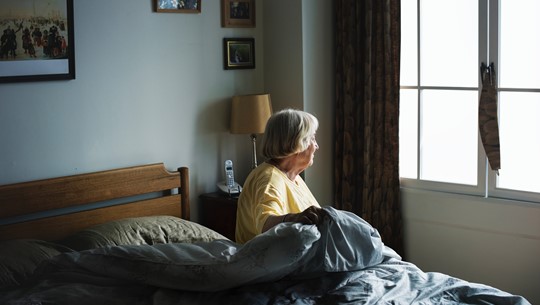Home monitoring of patients with chronic diseases allows district nurses to take care of their patients with a system that makes it possible for the patients to manage a number of medical tests on their own, in their own homes. Patients are given a fitness tracker, blood pressure monitor and/or a set of scales depending on the needs of the specific patient. All devices communicate with a smartphone app that transfers the readings to the care provider. All readings are monitored by the system and if something appears to be wrong or outside of the set limits, a nurse will contact the patient. Assessment forms in the app can be used to screen for mental illness.
Improved quality of life and sense of freedom for the patient as they no longer need to wait on the phone to get an appointment or take time off work to visit a health centre. Health care comes closer to both the caregiver and the patient. Patients that can and want to manage their own care are able to do so. Nurses can then focus on patients who have greater needs.
Patients with chronic diseases in need of regular medical testing or patients at risk for chronic diseases when it comes to prevention, i.e. weight loss and patients under medication. The application is also used by the district nurses in primary care to communicate with the patients. Doctors are consulted by nurses, when needed.
 Distance treatment
Counseling via online tools with associated treatment or own treatment.
Distance treatment
Counseling via online tools with associated treatment or own treatment.
 Distance monitoring
Social care remotely with sensors, cameras, reminders and data collection.
Distance monitoring
Social care remotely with sensors, cameras, reminders and data collection.
 Distance meetings
Close care concepts that move the point of healthcare closer or into the citizens' own homes.
Distance meetings
Close care concepts that move the point of healthcare closer or into the citizens' own homes.
 New distance-spanning solutions
New innovative solutions, new national infrastructure for digital services and service models where citizens can take greater responsibility.
New distance-spanning solutions
New innovative solutions, new national infrastructure for digital services and service models where citizens can take greater responsibility.
 Show all solutions
Show solutions from all four categories
Show all solutions
Show solutions from all four categories
